Abstract
Total and monensin-resistant anaerobic bacterial populations and volatile fatty acid concentrations were examined in the rumens of steers fed monensin-containing (33 mg/kg) and unmedicated diets. Total anaerobic counts on a habitat-simulating medium ranged from 7.1 X 10(8) to 7.1 X 10(9) CFU/g of rumen ingesta and were not significantly different in animals fed the two diets. The mean percentage of the anaerobic population resistant to monensin (10 micrograms/ml) was significantly greater in animals receiving the monensin-supplemented diet for 33 days than in those receiving the unmedicated diet (63.6 and 32.8%, respectively). Treatment group differences in monensin resistance tended to develop later than characteristic differences in acetate/propionate ratios. Relative proportions of resistant organisms in monensin-fed animals remained significantly greater for at least 18 days after monensin was deleted from the ration, whereas acetate/propionate ratios increased to values comparable to those in the control within 10 days. These data suggest that monensin-resistant bacteria may be present in greater numbers in the rumens of animals fed monensin-supplemented diets. However, greater proportions of monensin-resistant organisms were not necessarily associated with altered fermentation patterns.
Full text
PDF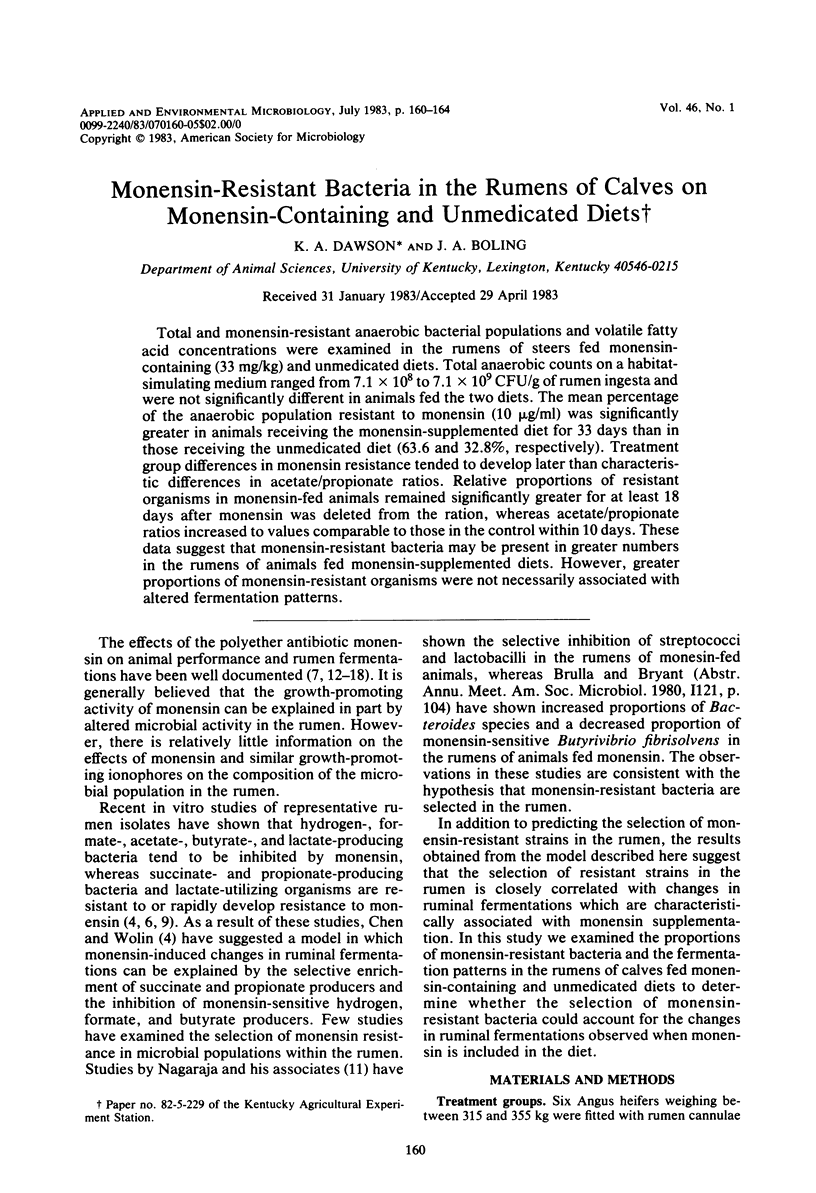
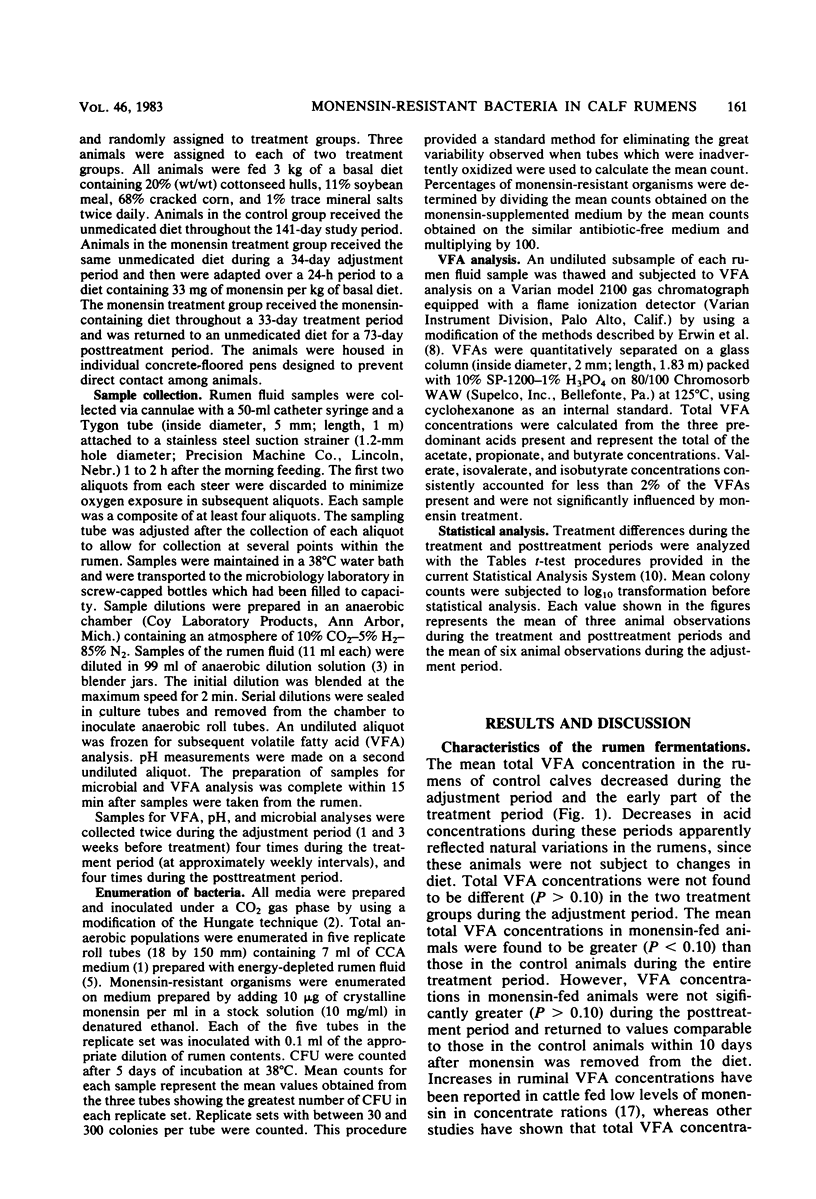
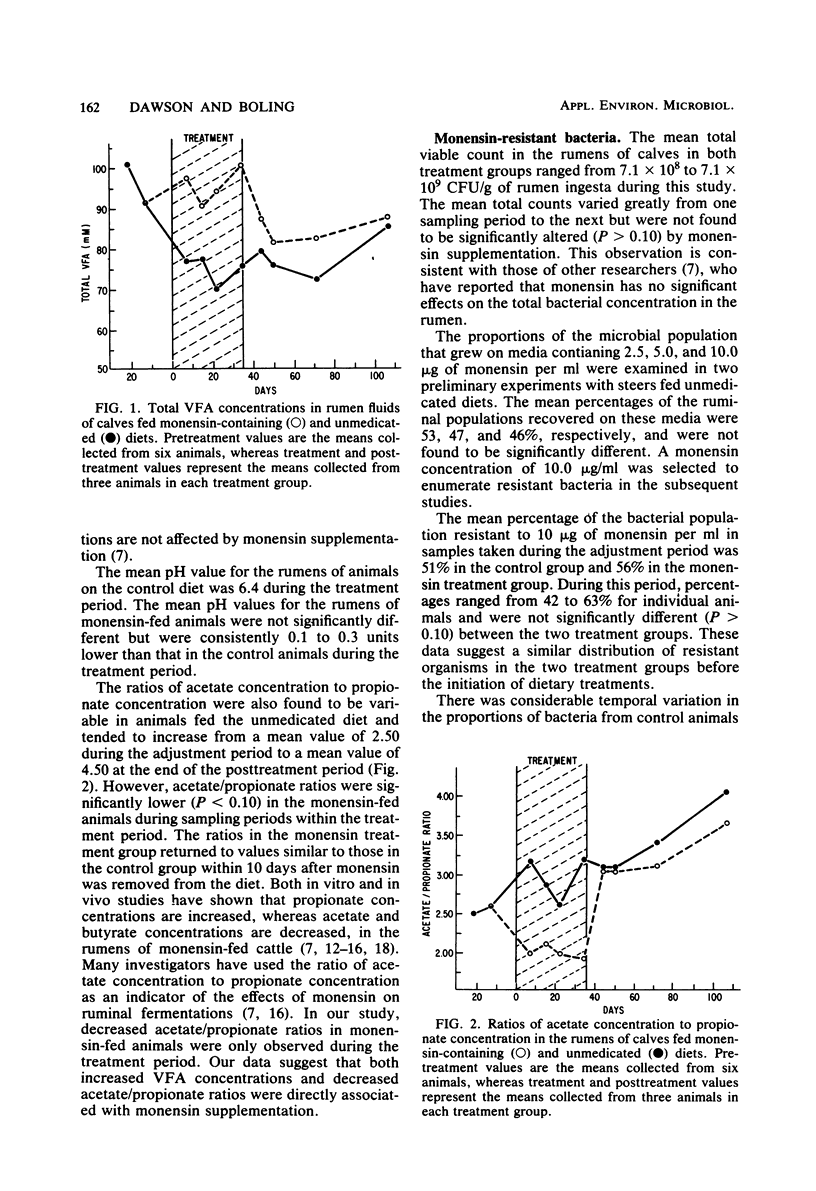
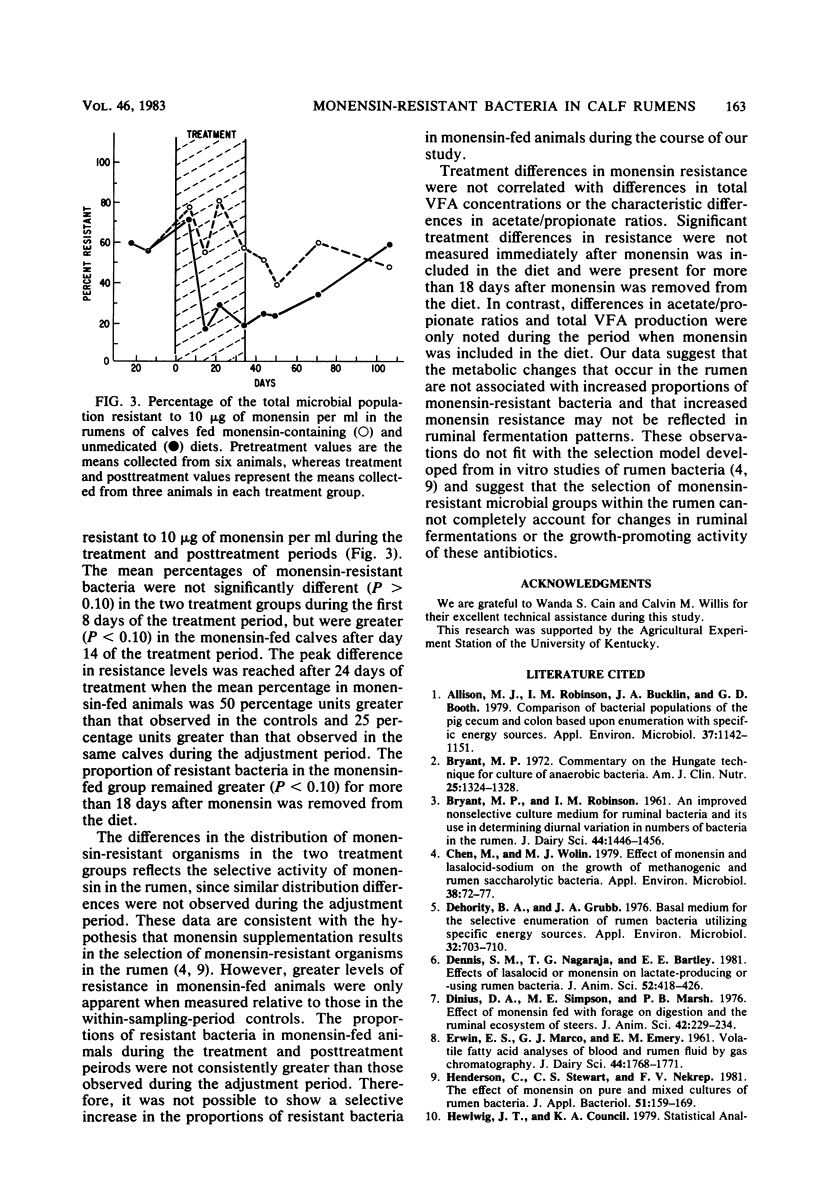
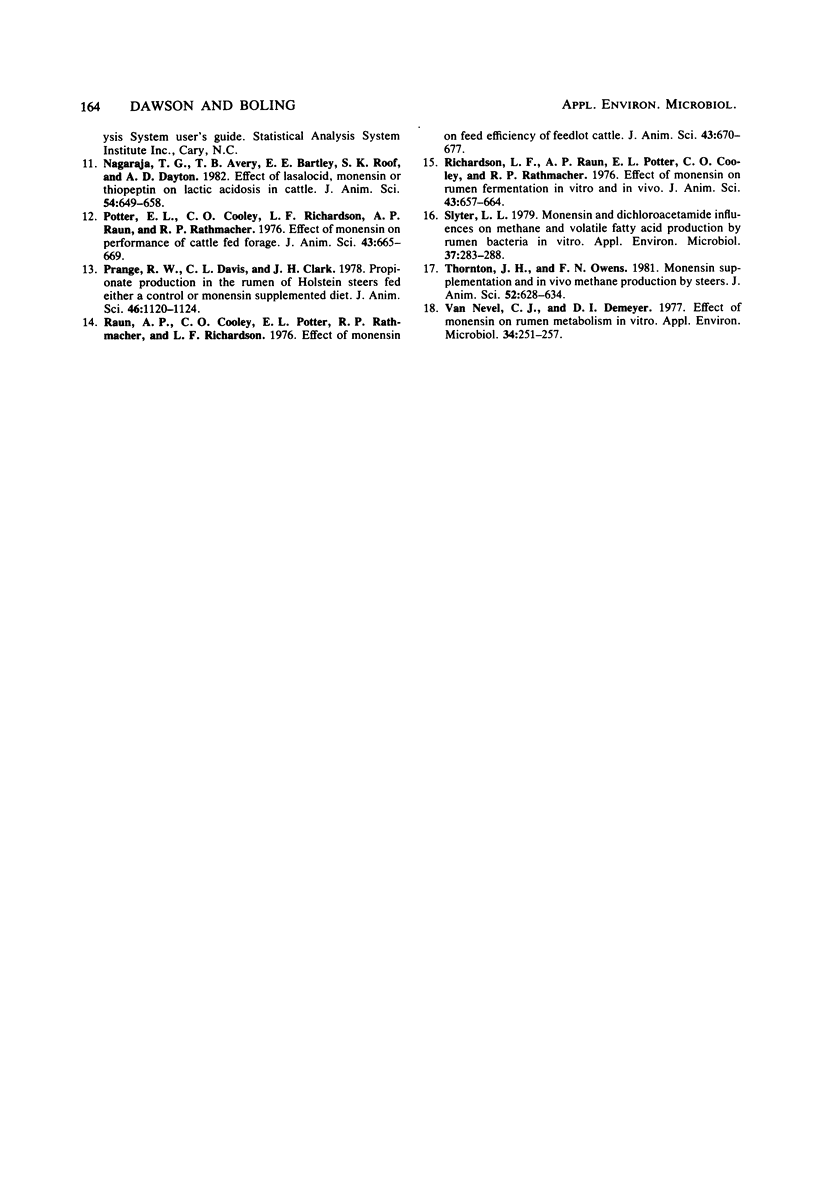
Selected References
These references are in PubMed. This may not be the complete list of references from this article.
- Allison M. J., Robinson I. M., Bucklin J. A., Booth G. D. Comparison of bacterial populations of the pig cecum and colon based upon enumeration with specific energy sources. Appl Environ Microbiol. 1979 Jun;37(6):1142–1151. doi: 10.1128/aem.37.6.1142-1151.1979. [DOI] [PMC free article] [PubMed] [Google Scholar]
- Bryant M. P. Commentary on the Hungate technique for culture of anaerobic bacteria. Am J Clin Nutr. 1972 Dec;25(12):1324–1328. doi: 10.1093/ajcn/25.12.1324. [DOI] [PubMed] [Google Scholar]
- Chen M., Wolin M. J. Effect of monensin and lasalocid-sodium on the growth of methanogenic and rumen saccharolytic bacteria. Appl Environ Microbiol. 1979 Jul;38(1):72–77. doi: 10.1128/aem.38.1.72-77.1979. [DOI] [PMC free article] [PubMed] [Google Scholar]
- Dehority B. A., Grubb J. A. Basal medium for the selective enumeration of rumen bacteria utilizing specific energy sources. Appl Environ Microbiol. 1976 Nov;32(5):703–710. doi: 10.1128/aem.32.5.703-710.1976. [DOI] [PMC free article] [PubMed] [Google Scholar]
- Dennis S. M., Nagaraja T. G., Bartley E. E. Effects of lasalocid or monensin on lactate-producing or -using rumen bacteria. J Anim Sci. 1981 Feb;52(2):418–426. doi: 10.2527/jas1981.522418x. [DOI] [PubMed] [Google Scholar]
- Donius D. A., Simpson M. E., Marsh P. B. Effect of monensin fed with forage on digestion and the ruminal ecosystem of steers. J Anim Sci. 1976 Jan;42(1):229–234. doi: 10.2527/jas1976.421229x. [DOI] [PubMed] [Google Scholar]
- Nagaraja T. G., Avery T. B., Bartley E. E., Roof S. K., Dayton A. D. Effect of lasalocid, monensin or thiopeptin on lactic acidosis in cattle. J Anim Sci. 1982 Mar;54(3):649–658. doi: 10.2527/jas1982.543649x. [DOI] [PubMed] [Google Scholar]
- Slyter L. L. Monensin and dichloroacetamide influences on methane and volatile Fatty Acid production by rumen bacteria in vitro. Appl Environ Microbiol. 1979 Feb;37(2):283–288. doi: 10.1128/aem.37.2.283-288.1979. [DOI] [PMC free article] [PubMed] [Google Scholar]
- Thornton J. H., Owens F. N. Monensin supplementation and in vivo methane production by steers. J Anim Sci. 1981 Mar;52(3):628–634. doi: 10.2527/jas1981.523628x. [DOI] [PubMed] [Google Scholar]
- Van Nevel C. J., Demeyer D. I. Effect of monensin on rumen metabolism in vitro. Appl Environ Microbiol. 1977 Sep;34(3):251–257. doi: 10.1128/aem.34.3.251-257.1977. [DOI] [PMC free article] [PubMed] [Google Scholar]


